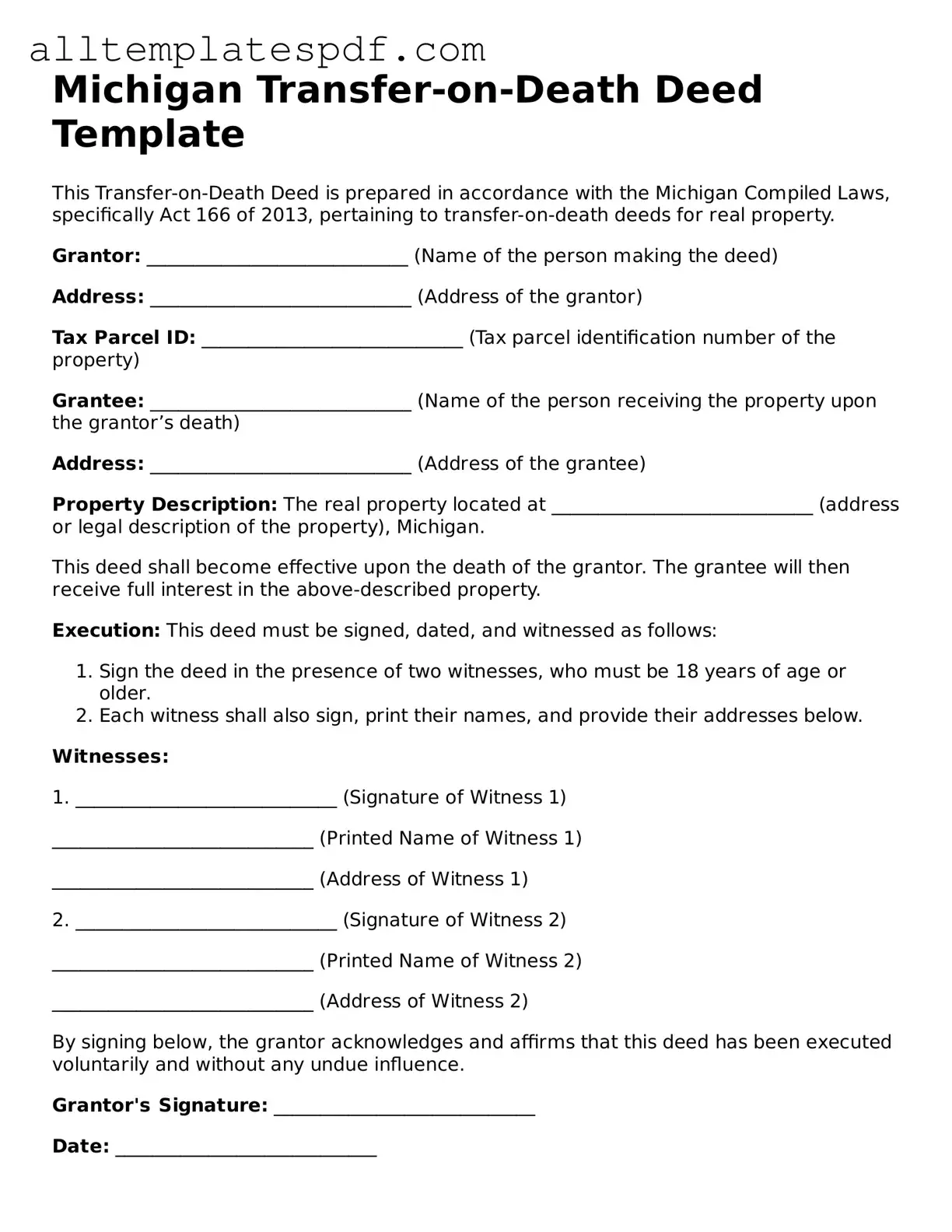Filling out a Transfer-on-Death Deed (TODD) in Michigan can be a straightforward process, but many people make common mistakes that can complicate matters later. One frequent error is failing to include all required information. The form requires specific details about the property and the beneficiaries. Omitting even a small piece of information can lead to delays or legal issues down the line.
Another mistake involves not properly identifying the property. It's essential to provide a clear and accurate legal description of the property. Using vague terms or incorrect addresses can result in confusion and potential disputes among heirs. Always double-check the property details against official records to ensure accuracy.
People often overlook the importance of signatures. The TODD must be signed by the property owner and, in some cases, notarized. Failing to do so can render the deed invalid. Additionally, if there are multiple owners, all must sign the deed for it to be effective. Ignoring this requirement can lead to complications in transferring ownership.
Some individuals mistakenly believe that a Transfer-on-Death Deed replaces a will. While it can be a valuable tool for transferring property outside of probate, it does not cover all assets. It's crucial to understand that a TODD only applies to the specified property and does not address other assets or debts that may need to be managed through a will.
Another common issue arises from not understanding the implications of a TODD. Beneficiaries should be chosen carefully, as they will receive the property upon the owner's death. If the designated beneficiary predeceases the owner and no alternate is named, the property may end up in probate. It’s wise to consider potential changes in family dynamics and plan accordingly.
People also tend to neglect the need for updates. Life circumstances change, and so can relationships. After significant life events, such as marriage, divorce, or the birth of a child, it is essential to revisit the TODD and make any necessary adjustments. Failing to do so can lead to unintended consequences.
Another mistake is not recording the deed properly. After completing the form, it must be filed with the appropriate county register of deeds. Many people forget this step, believing that simply filling out the form is sufficient. Without proper recording, the deed may not be recognized, and the intended transfer may not occur.
Moreover, individuals sometimes misinterpret the tax implications of a TODD. While the transfer of property via a TODD typically does not incur immediate tax consequences, it’s important to be aware of potential estate taxes or capital gains taxes that may arise later. Consulting with a tax professional can provide clarity on these matters.
Lastly, many people fail to seek professional advice. Navigating property transfers can be complex, and having a knowledgeable advisor can help avoid pitfalls. Consulting with an attorney or estate planner can provide valuable insights and ensure that all aspects of the deed are handled correctly.
